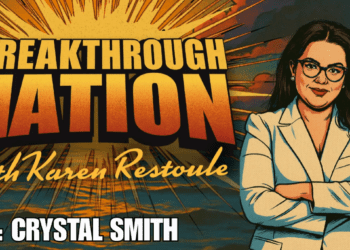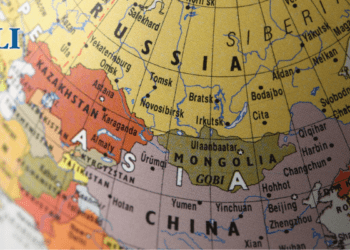By Heather Exner-Pirot, June 27, 2025
I read with interest the contribution by Alykhan Velshi in The Hub this week, titled “Canada will never build another pipeline.” In Calgary, pipeline discussions tend to focus on the practical: what route, what proponent, what regulator, what cost. Velshi offers instead a philosophical look at Canadian pipeline politics, a treatise on our internecine war:
“No pipeline is coming. Not under Prime Minister Mark Carney. Not under any federal leader. But the promise of a pipeline—the vague, lingering maybe—is too useful to kill. That promise allows Ottawa to discipline the West, delay their demands, and extract cooperation without ever offering reciprocity.”
Velshi is wrong. Canada will build more pipelines; it is inevitable. The only question is how much money and frustration will be spent on these endeavours, and by whom.
To paraphrase from Frank Herbert’s literary saga Dune, the spice must flow. Canada’s oil and gas resources are too valuable and too consequential to not find their way to global markets. The politics and economics will eventually line up to make them happen. They seem to be lining up already.
Natural gas flows easiest
I can only suppose Velshi means another interprovincial oil pipeline will not be built in Canada, and not pipelines in general, which would be like saying we will build no more roads or railways. Pipelines are constructed every day in this country, such as oil-gathering pipelines that feed into larger transmission networks, or distribution pipelines carrying natural gas for utility customers.
But even on the scale that matters for the government’s nation-building projects list, there is an export project in the pipeline. The 900-km Prince Rupert Gas Transmission (PRGT) pipeline will feed into the proposed Ksi Lisims LNG project on Pearse Island, near the B.C.-Alaska border. It received a 10-year certificate from the B.C. Environmental Assessment Office (EAO) in 2014, but sat dormant due to market conditions. Those eventually improved, and the project gained new steam. Just this month, the EAO ruled that the project had been “substantially started” before the certificate expired in November 2024, and affirmed it is still valid.
For the record, PRGT is an approved fossil fuel export pipeline currently in the early stages of construction in Canada. We are building another pipeline.
Bitumen or bust
PRGT has the advantage of being entirely within B.C. and not subject to federal oversight, and thus the Impact Assessment Act (IAA). In addition, it carries natural gas, which has become more accepted politically given Canadian LNG’s low emissions intensity, its potential to displace coal, importance for our allies’ energy security, and the fact that it does not spill.
The real prize (or fight, depending on your perspective) is for a new interprovincial pipeline carrying bitumen from Alberta’s oil sands to B.C.’s west coast: a Northern Gateway by any other name. This is surely what Velshi had in mind for his article. Can it be built?
Forces are conspiring to make it so. A northwest B.C. pipeline—to be specific, a 42-inch pipe from Alberta to Prince Rupert with a capacity of a million barrels—has been a very clear ask from an emboldened Alberta in response to Carney’s call for national building project proposals.
Messaging has emerged from both the federal and Alberta sides of a “Grand Bargain” that could see a quid pro quo of carbon capture for egress. B.C. Premier David Eby has incrementally softened his opposition to such a pipeline, such that his objection as of this week is to federal subsidies, not the pipeline itself. Alberta Premier Danielle Smith said this week she expects a private-sector firm to propose a new oil pipeline to the British Columbia coast this summer. The stars are aligning.
As to whether we should trust these signals, Velshi warns us not to. This seems overly pessimistic. After all, three export pipelines were completed during Prime Minister Justin Trudeau’s tenure in far less propitious circumstances: Coastal Gas Link, Line 3, and Trans Mountain Expansion, the latter at great political and financial cost. The pipeline business has discovered a great tool to earn Indigenous consent in the interim: Indigenous loan guarantees that support equity participation, which have been put into effect for a number of pipelines already.
But then again, no pipeline project has ever been submitted or approved under the “no more pipelines bill”—the IAA—which became law in 2019 and has borne out its moniker. Neither did previous efforts have to deal with the poison pill of an oil tanker export ban on the B.C. northwest coast, or the precedent of the $34 billion TMX price tag. Would anyone voluntarily step into such a quagmire again?
At this point, I join Velshi in examining the prospects of a new Canadian export pipeline theoretically rather than practically. The realism school of international relations tells us that another Canadian pipeline is inevitable. Oil is too important and strategic, and our resource is too exquisite (huge reserves, long resource life, and increasingly low cost) to go unexploited.
The oilsands will always lie there in temptation, whether for a Canadian government, an Albertan government, or an American government. It imparts power and prosperity, and thus security. Canada needs more of all three. But if Canada does not want it, others will gladly have it.
As for the business case, I expect that human civilization will always use hydrocarbons. We may burn less of it in the coming decades to respond to climate concerns. But the bitumen from the oilsands will still find markets.
“No country would find 173 billion barrels of oil and just leave it in the ground. The resource will be developed. Our job is to ensure this is done responsibly, safely, and sustainably.”
That was true in 2017 when Trudeau said it, and it remains true today. Whether another Canadian oil export pipeline gets built now or in the coming decade, history tells us that it will, at some point, get built. Our choice is to do it the hard way or the easy way.
Heather Exner-Pirot is the director of energy, natural resources and environment at the Macdonald-Laurier Institute.
- Ksi Lisims LNG has already secured offtake agreements from Shell and TotalEnergies, and a Final Investment Decision is expected in late 2025. Both B.C. and the federal government still need to approve Ksi Lisims LNG, something that is anticipated in the coming weeks or months. This project appears to have provincial and private support, and it has an Indigenous co-proponent, the Nisga’a Nation. Nothing is ever a sure thing in Canadian oil and gas, but Ksi Lisims and the PRGT look like good bets.
- He wrote: ”The pipeline is not a promise. It is a shackle: gilded to resemble progress, forged to restrain. The longer the West mistakes that shine for strategy, the longer it remains captive to its own expectations.”
- There will always be some demand, from those who want their supply from a democratic ally or from a secure source; as a means to backfill eventual declines in U.S. production, as a feedstock for the global petrochemical sector which has no signs of peaking, and as an easy replacement for the millions of barrels that will come offline as many of the world’s best conventional fields reach their own peak in this decade or the next.








